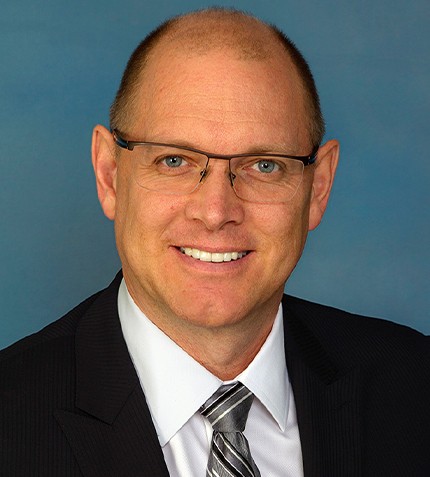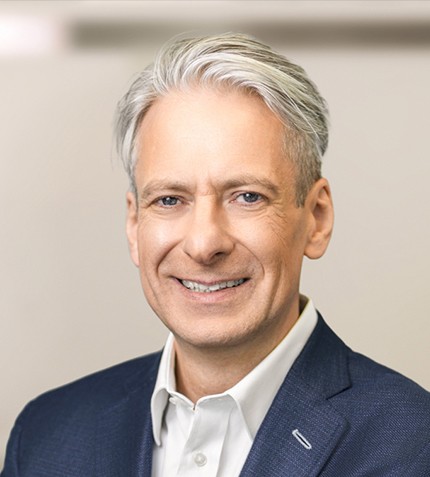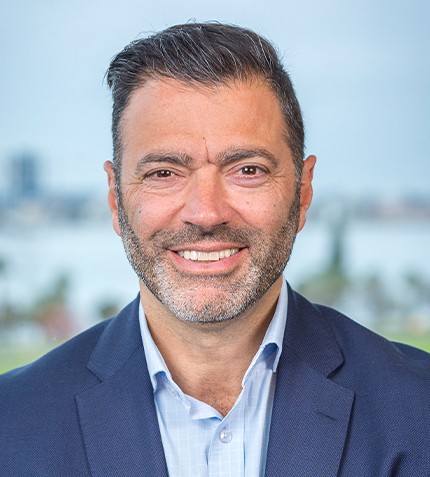
"Our mandate remains clear — to connect our members to opportunities that grow their businesses."
Ryan McEachern
MANAGING DIRECTOR, MSTA CANADA
Could you provide some recent highlights for MSTA as it celebrates its 40th anniversary?
Our 40th anniversary is a very important milestone as an association, starting as an idea with a few gentlemen from Ontario at a poolside in Peru to now being the national voice for the mining supply and services (MSS) sector for Canada. It is an exciting time as we sit with just over 240 corporate members and continue to advocate on behalf of the MSS sector with the government and abroad. Our mandate remains clear — to connect our members to opportunities that grow their businesses. We have embraced and adopted digital platforms, triggered by the pandemic. Our video series, MSTA CANADA The DIG, is a great platform to communicate, inform and connect our members.
How has the “Made in Canada” brand evolved?
The Made in Canada brand exists under an umbrella of themes, such as quality, reliability and safety. Canada has a long vibrant history in modernizing mining, and the mining supply and services sector continues to adapt. As the industry migrates to digitalization and decarbonization, the supply and services sector in Canada continues innovating and providing products for the mining industry’s needs.
How is the mining sector struggling with Industry 4.0 after it never fully adopted Industry 3.0?
Back in 2015, we identified an adoption issue. Exactly what you said in your question is what the issue is, and first to be second still rules the day. Mining is a highly variable and unstable work environment. As soon as you blast, the rock mother earth gives you is a surprise, and variability builds upon itself from there. The solutions and willingness are there but how to implement is the issue. Trying to de-risk solutions is crucial. How do you manage the risk of change and the impact on the organizational culture, because it will be disruptive? As technology and innovations move so fast, the industry is trying to keep up. Do you wait, or do you draw a line in the sand and learn, knowing that you could update at a later stage? There is this need for a universal translator. We have so much data and different things communicating now. The data is not yet being fully utilized.
How quickly can innovative approaches to ESG be developed in the services sector?
In order to develop innovative approaches to ESG, a tipping point was for the investment community to get on board. Shareholders are now taking note. However, as an example, for battery electric vehicles the adoption rate is still really low. But eventually, it will take hold. The starting point here is reducing carbon emissions, but we need to mature our approach being cognizant of the inputs into the solutions. The lifecycle of these products needs to be a part of the equation, such as the concept of the circular economy. We cannot have an automotive company making electric vehicles, yet sourcing nickel that has the highest GHG footprint to produce the metal. You cannot make a solution that has a dirty process. We will need to move along the maturity curve to truly reach a net benefit for the world. Also, the pandemic disrupted global supply chains and exposed weaknesses. We are now seeing discussions around a more regional approach to create what is being termed ‘resilient’ supply chains. This is going to have a ripple effect, not just in the broader economy, but in mining. Our supply chain landscape is about to change and will have an impact in terms of ESG.
How can the mining industry strengthen its community relations and help develop remote areas?
The industry needs to do a better job of showing what it does well. There is a communication and trust deficit between communities and the perception of what mining companies are doing. It is about making sure the communities around an operation clearly see how they will be safe and will benefit. There is an assumption that mining operations produce a lot of direct employment, which they do not. Once the project has been built, we are only talking about hundreds of people that are able to have full time direct employment with the mining company. The majority of employment opportunities will be from the supply chain, which can be 2.5 to four times higher relative to the actual operation. It is really the suppliers that are going to provide those opportunities. There is no doubt the focus has to start with the social licence to operate and transparency of the benefits to all stakeholders will be key.










